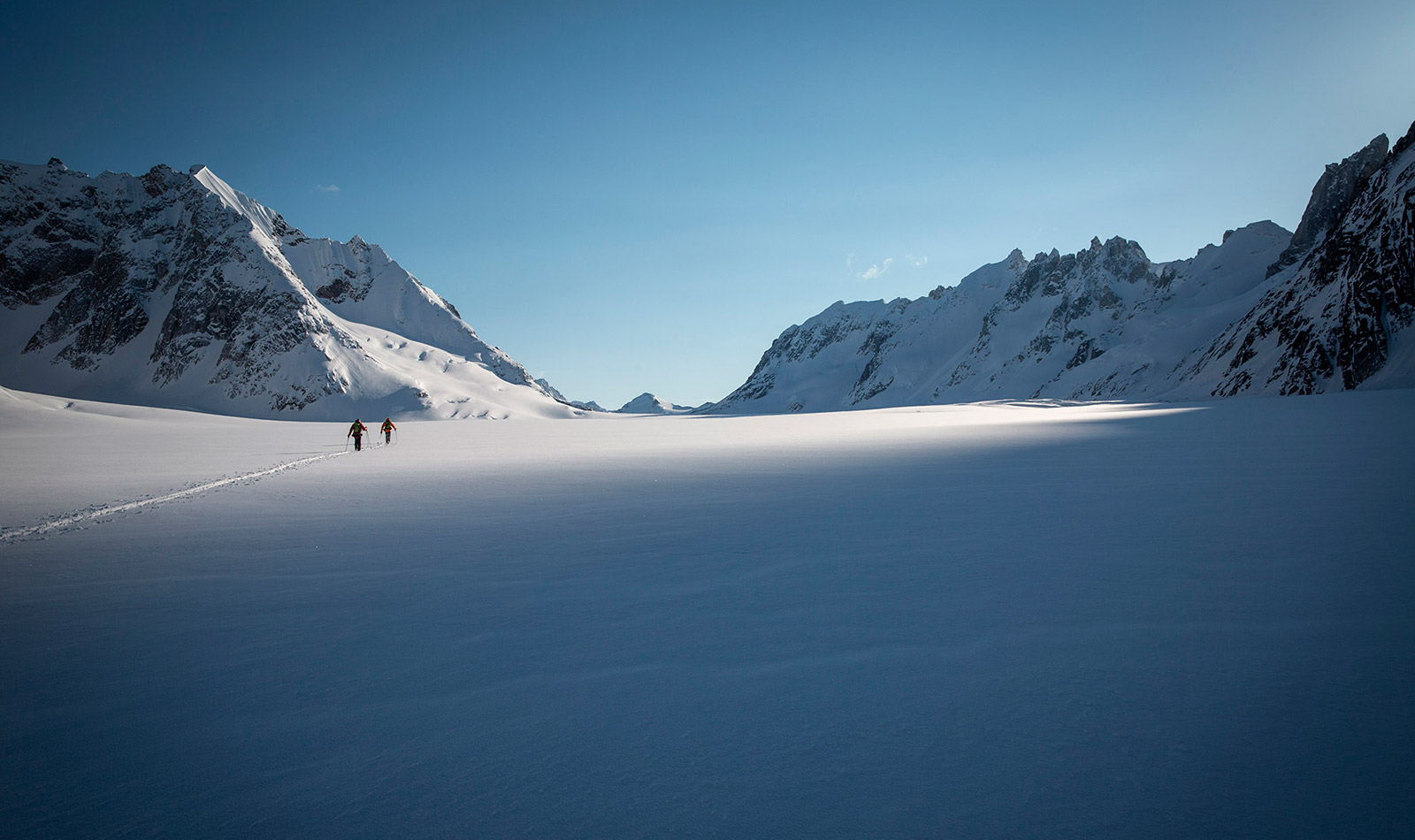Citadel
An Interview with Alastair Lee
Dubbed ‘The Mountain God’, the Citadel is a stunning 3000m peak in one of the remaining untouched corners of the Great Alaskan Range: The Neacola Mountains. The Citadel is a film by Alastair Lee following Matt Helliker and Jon Bracey’s objective to make the first ascent of the 1200m-long north-west ridge. Andrew Mazibrada caught up with Al to find out more about the film and the story behind creating it.
Andrew: Can you summarise the story of Citadel and the two main protagonists.
Alastair: On the face of it, the film contains a pretty straightforward narrative. It focuses on two top alpinists doing what top alpinists do – finding an inspiring line on an amazing mountain and then setting about trying to climb it and overcome the many unknowns and obstacles in their way. The Citadel delivers on all these fronts, even more than we could have hoped, but what the film also does is develop the characters on a human level – we find out who they are as people, what lives they lead, what they have to lose should things not turn out the way they intend. The film also looks at the the pursuit of alpinism itself, something that is out of vogue right now and which still carries considerable personal risk. Along the spectacular, and at times gripping, journey we expose the question why, along with the dilemma any mountaineer faces – the paradox of it all. Risking everything, putting everything on the line for an objective where the chances of any type of success are slim at best.
The Protagonists Matt Helliker and Jon Bracey have a proven track record of world-class ascents through the Alps and Alaska, and form a curious partnership. On the face of it, they couldn’t be more different in personality. Matt very much the affable, poster-boy living the climbing dream in Chamonix, whereas Jon is a little older and has the responsibilities of a young family, a house to renovate, and bills to pay. He is a much more reserved man. One thing they certainly have in common is that they are both absolute machines in the mountains – as fit as you could imagine. Matt sport-climbs 8b+, not bad for a mountaineer! I think what we learn is that this contrast in characters sets the scene for a successful relationship and they both bring different things to the table which in the mountains can be a very good thing.
You’ve been quoted as saying your work focuses more on story and the characters within that story than the technical detail of climbing lines and grades. Firstly, why do you think this important to the films you are making? Secondly, how do you set out to achieve this?
I think story and characters are important to not just my films, but in fact to any film. They are much more interesting and involving than technical grades or style of ascent. Grades, style of ascent, and the mountain itself are important factors, however they serve only as the set up and backdrop to tell a compelling story with fascinating and engaging characters. Without the latter, you really only have an animated guidebook. No matter how difficult the climb may be, without a good story it soon fades in interest.
I’m also keen to take something that is quite a niche subject and make it accessible to, and enjoyable for, a wider audience. I’m trying to do this in a way that still holds the integrity of climbing and mountaineering, but in a way that anyone can understand and relate to. It’s the human interest we can all tap into. For example, I opened the Citadel trailer with a shot of Matt and Jon setting up their bivy tent in the most ludicrously exposed and precarious position imaginable. To most people this might seem insane and, at first, it’s hard to relate to it. However, the audio then opens with a very normal, almost mundane, conversation between these two people. This helps normalise the situation, showing us everyday things like cleaning teeth, checking time, and getting ready to eat. This helps us understand that, whilst the climbers may well be extraordinary people in extraordinary circumstances, they are still human – just like you and me.
That’s one of the things I’m very aware of on an expedition or climb – I’m looking for those human moments. They can very often be funny, not because the speech or action itself is particularly funny, but instead the situation in which it occurs makes it so. It’s that juxtaposition between a very normal thing and its taking place at the end of the earth that can help people relate to the climbers.
I’m looking for those human moments. It’s that juxtaposition between a very normal thing and its taking place at the end of the earth that can help people relate to the climbers.
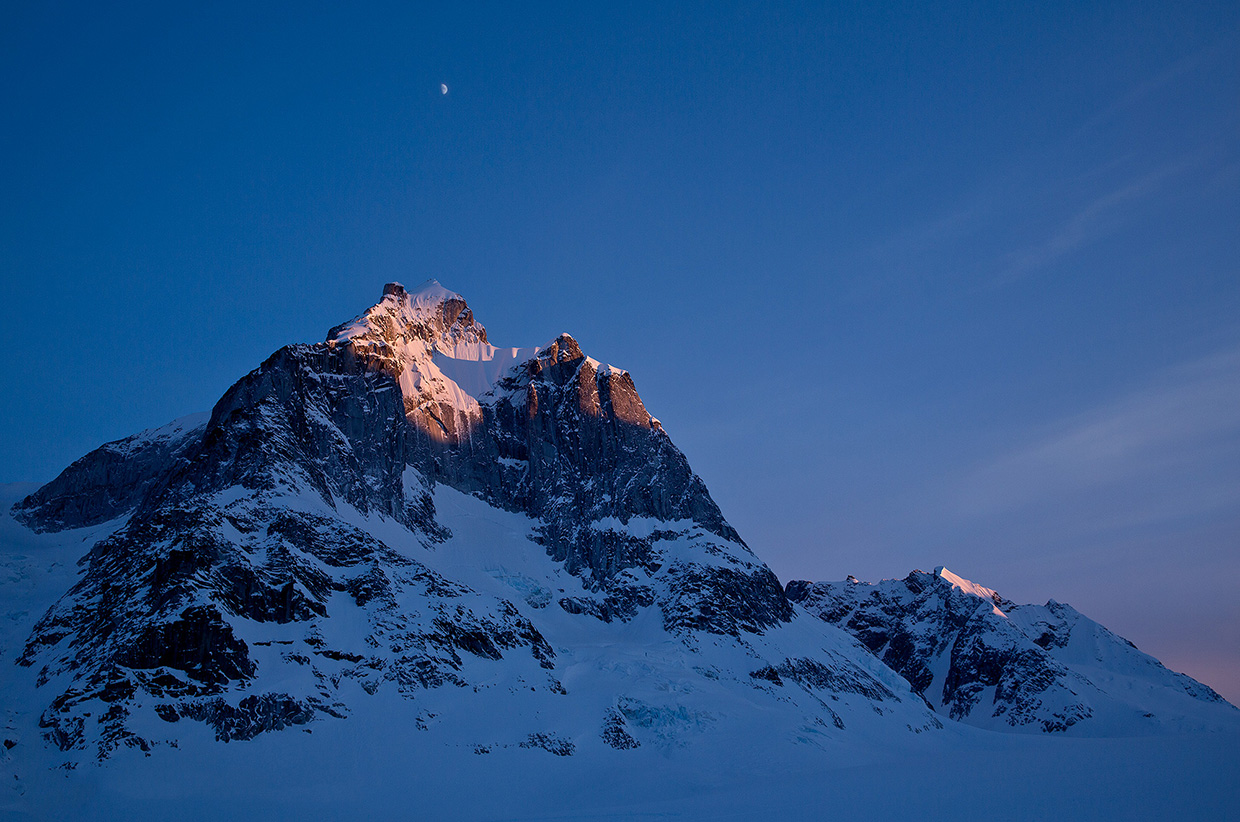
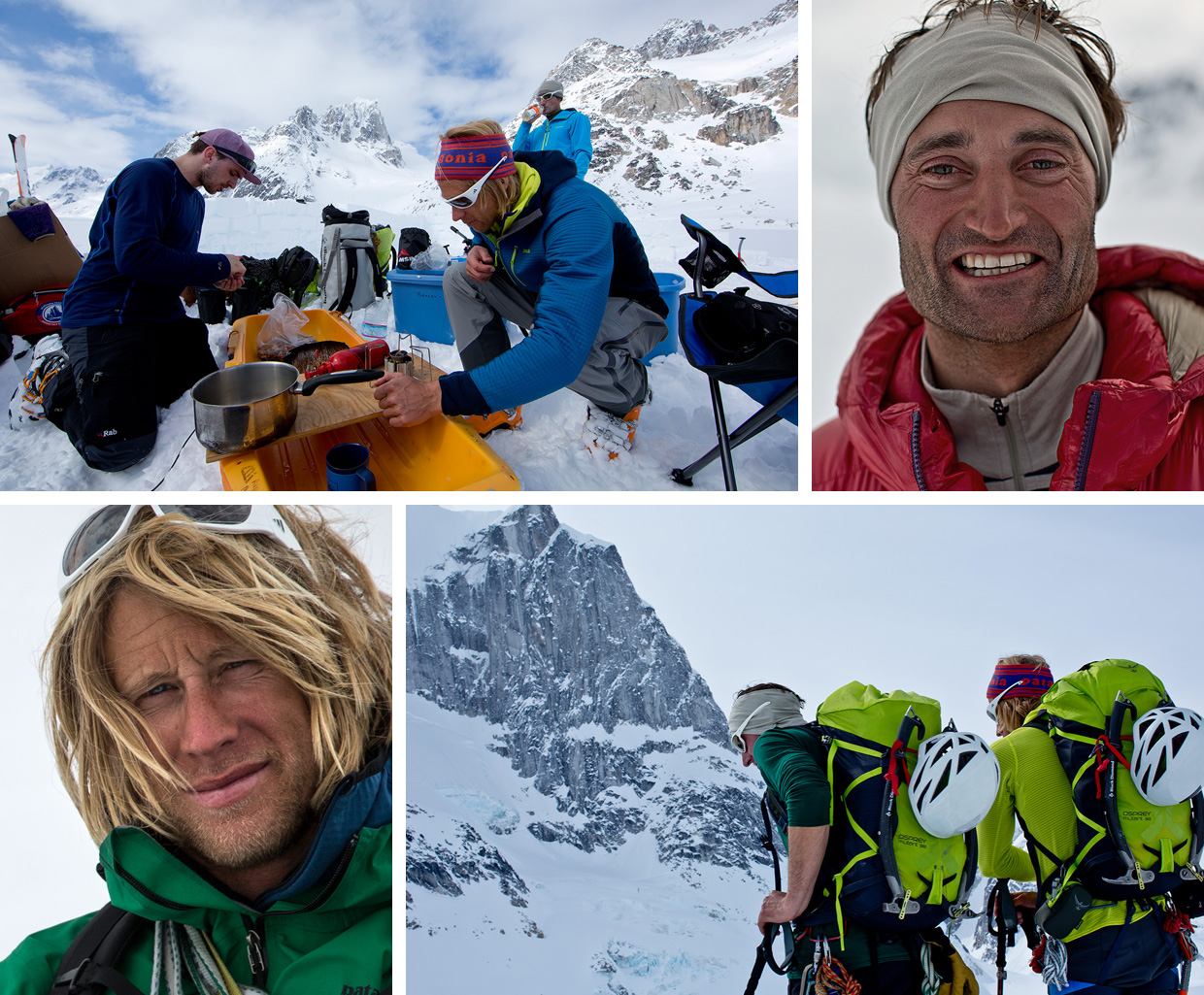
Do you set out an internal structure for your films, as you would very often find in fiction? In particular the introduction of the characters in a way that makes us care about them, the hook and the explanation of the jeopardy, the characters up against it, then the denouement? Does this structure work in a dramatic non-fiction setting like the ones you are trying to create?
Yes, I think there are parallels for sure. A documentary’s narrative structure follows a similar pattern to a fictional narrative. There’s no changing a good story or the best way to tell that story – unless you’re Quentin Tarantino who seems able to structure story in a way that would be a disaster if I tried it! Certainly introducing the characters and getting the audience to buy into them as people, and root for them in the film, is something you have some control over as this can be done away from the actual expedition. For example, with Citadel, I went out to Chamonix where Matt and Jon live (albeit not together) for this part of the documentary. The main difference of course, between fiction and a reality documentary like this one, is that you have no control over what happens on the climb. Things can easily get out of hand with only one or two production crew, so it’s as much about being a sound and safe expedition member as it is about being a film maker – you have to balance the two. But essentially it does work in the same way, albeit in a very loose sense.
“Victory snatched from the jaws of defeat.” In classic screenwriting, we see the ‘all is lost’ moment, when the protagonists appear to have failed in their quest and then suddenly reach for their last remaining reserves to win through. I see moments like that in your work – is that deliberate? Or, in truth, does the non-fiction drama depend too much on actual events to allow you that flexibility of storytelling?
It’s not deliberate – you are absolutely at the mercy of what actually happens on the mountain. That said, obviously when it does happen, you totally emphasise that aspect of the story as it gives it a really natural arc. Asgard (Lee’s award-winning 2010 film, The Asgard Project) was perhaps the first really good example of this. Everything seemed to go wrong on that trip, but somehow we popped up at the top of the wall. The more things that turn against you, the more the audience roots for you and wants success. Of course, if we’d have failed we wouldn’t have had a film at all, so it’s a very fine line. I think with the Antarctica film (Lee’s award-winning 2013 film, The Last Great Climb) the opposite occurred and, whilst the ascent and undertaking were of epic proportions, things pretty much went our way and I think the film lacked a bit of something because of that. The best films I make are the worst ones to live through.
You’ve held back details of the climb, even whether Matt and Jon summited at all. Why?
I wanted to give the film a measure of uncertainty that’s not present when the story has already been published across the world. Of course, as soon as one person watches it and goes online it won’t make any difference, but not having a lead sponsor this year gave me licence to do that and it’ll be interesting to see what difference, if any, it makes.
Novelists spend months, if not longer, honing their characters. You work with real people, and tell a story that is compelling and engaging. Why did you choose Matt Helliker and Jon Bracey – what is about them, and their relationship, that audiences will be enthralled by?
I wouldn’t say I chose them, it’s really not that scientific (well, unless you’re talking chaos theory). The truth is Matt sent me a picture of the mountain, and the line they wanted to climb, and within around 5 seconds of seeing it, I knew I was going to make it happen. The bottom line of it all is that I love mountains, and I really love stunning, beautiful mountains. They’re so fascinating and intimidating, it’s just damn exciting. It’s a happy coincidence that Matt and Jon are a couple of really engaging guys, very different in almost every way, which only adds to the intrigue.
Why Alaska? And Why, in particular, Neacola?
Very easy answer – it’s remote, it’s relatively unheard of and unexplored, and it’s absolutely stunning. Like a mini Chamonix range tucked away in the Great Alaskan Range. Perfect, wouldn’t you say? Also, the great thing about this location was that whilst it’s remote and difficult to get to, it is accessible by air and, as opposed to Antarctica, for example, you can get a helicopter in to film. It’s expensive, but possible (with a bit of persuasion and somebody else’s money). As you’ve seen in the trailer, the helicopter footage is absolutely key to this film – in many ways, it’s what defines it.
Matt sent me a picture of the mountain, and the line they wanted to climb, and within around 5 seconds of seeing it, I knew I was going to make it happen. The bottom line of it all is that I love mountains, and I really love stunning, beautiful mountains.
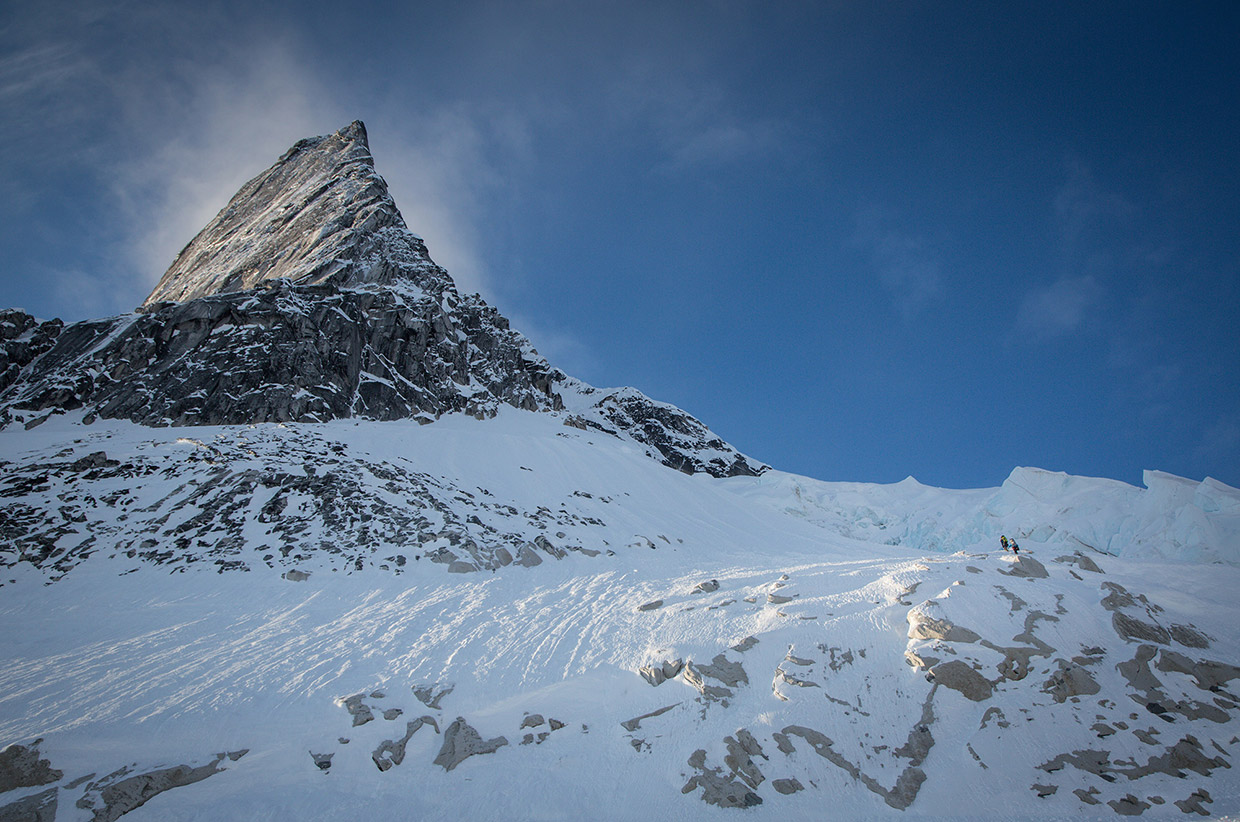
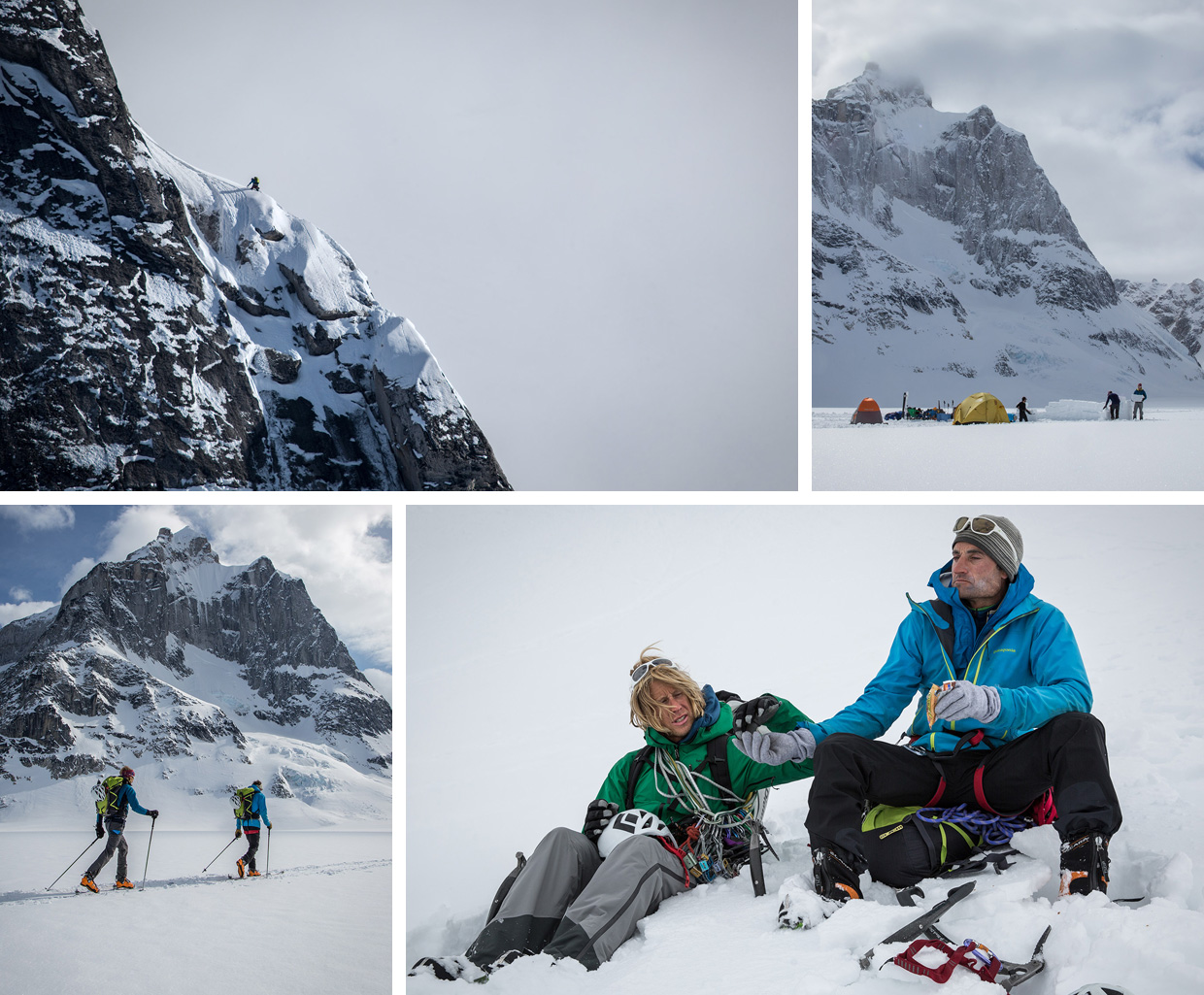

How has your own climbing had to develop in order to make these films? How do you feel, challenging yourself in remote environments like this?
I’m not sure my own climbing has developed at all – if anything, my own climbing has fallen off the radar. To do something as all-consuming as film-making takes total commitment. Add a young family to the mix and, well, I’ve basically not been getting out as much as I did when I was 26. What has developed is my experience in wild and remote areas and, of course, my jumaring technique (climbing fixed ropes) and knowledge of rope set-ups and belays. The skills required to climb a big wall are quite different from a day out at the crag. On any of these trips I generally do very little climbing, but lots of jumaring which is an exhausting yet mind-blowing experience in itself. You still need to be fit as there’s lots of heavy bags to be carried around and shifted from one camp to the next. The main thing you learn about existing in these in environments is that it’s not about being a tough guy and putting up with a lot of pain and discomfort, although that invariably happens, it’s more about looking after yourself. Eat properly, look after your feet, change out of wet clothing and so on.
That said, I do have my own micro-adventures within the bigger picture of a large objective in a long expedition. In Antarctica there had been a plane crash on the other side of the mountain range the day before we arrived. Myself and Chris Rabone decided to ski around the range to get some photos of the bashed up DC-3. That was a fantastic day – it was nice to have a day off from filming and just really enjoy being there. We skied for about 13 hours, with only a short break, in the most amazing landscape you could image. Another time, in the jungle of Venezuela, the approach to the base of the wall was particularly adventurous involving vertical tree, and mud and rock scrambling, to get to a good ledge. I really enjoyed this part of the climb – it was like being a kid again, playing the wastelands of the north of England. I had a pretty hair-raising moment on my way back down one day where I decided I’d employ a back-belay style set-up to descend a fixed rope – i.e. not using a harness, just wrapping the rope around my arms and back. It looked pretty short, but turned out to be really steep. The resulting rope burns on my arms made good use of about half of our first-aid supplies.
Essentially it’s often pretty intimidating going on these trips, and they usually challenge me right up to the limit, but I do relish the experience. I even enjoy it at times!
‘Citadel’ premieres at Hebden Bridge Picture House on Thursday 8th October and then will be part of the Brit Rock Film Tour.
Matt Helliker wrote about his experience of the climb in Sidetracked Volume Five and spoke to Suzy about life as an alpinist in our interview Vertical Pioneering



